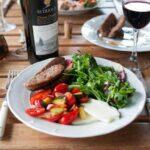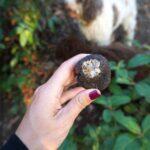Go far and wide in this region to discover some of the best foods in the world.
The key to Tuscany’s impeccable cuisine is its simplicity: the ingredients are fresh and the preparation has been perfected over generations. Tried and true delicacies never go out of style here and are worth indulging in even if it’s not something you’re used to snacking on (organ meat sandwich, anyone?). In Umbria in central Italy, you’ll find a large concentration of the country’s truffles—but you might have to forage them yourself to get a taste.
From mountain-grown honey to some of the world’s best prosciutto, you can eat your way through Tuscany and Umbria with the items on this list.






